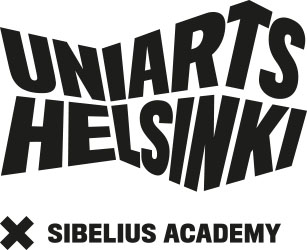
Trashy sessions – finding music in Nesland
Projektityö
Taideyliopiston Sibelius Akatemia
Kansanmusiikin aineryhmä
Kevät 2024
- Julkaisuvuosi: 2024
- Tekijä: Veera Katila

Projektityö
Taideyliopiston Sibelius Akatemia
Kansanmusiikin aineryhmä
Kevät 2024
This project is a part of my master studies in Sibelius-Academy and will together with master concert form my thesis. The project consists of written part (which is this text) and an artistic part, which is presented here with videoclips, both done in the University of South-Eastern Norway, where I spent the year 2023 as an exchange student.
My research focuses on music-making with non-instrument objects, both by examining some examples in Norwegian (and other) traditions and expanding these ideas into my own work as a musician and a sound artist. I have always been interested in sound, its qualities and the act of listening – also outside the machines we build and call instruments. Once we frame something as music, we automatically change our way of listening to sounds that would otherwise maybe not interest us, or that could even annoy us. These kinds of non-instrument objects can also be referred to as found instruments.
My interests lie in the non-performing, playful, experimental and free listening domains; in the actions where in fact listening becomes more important than the trained practice of producing sound with a carefully designed instrument-object. With this research, I wish to deepen my understanding of such listening-focused traditions, because it is definitely not only a modern phenomenon. The folk music studies at Sibelius-Academy alongside my earlier, non-institutional practice of improvisation on the clarinet have offered me an entrance to the world of free and experimental improvisation, from which I have drawn a great deal of inspiration for this research as well.
Henrik Borgdorff’s definition of artistic research describes well my own thoughts: instead of looking for formal knowledge on the subject matter, artistic research focuses on unfinished thinking, “thinking in, through and with art” (Borgdorff 2010, 44). The creative process, the work of art, is not just the result, but also the method, which “forms the pathway through which new insights, understandings and products come into being” (Borgdorff 2010, 46). Instead of being led by hypothesis, the artistic research is led by discovery: intuition, guesses, hunches, and happy accidents leading to unexpected issues or surprising questions and the unknown, unthought and unexpected (Borgdorff 2010, 56; 61).
My main method for artistic research is playing, but in the sense of the Norwegian word lek or the Finnish leikki. Both translations are more specific to the manner in which children play as opposed to playing an instrument (spille / soittaa). For me, lek is almost always improvisational, or at least free in the sense that all plans can change at any given time. I aim for a deep state of listening and reacting to what one hears, making often more sound- and texture-based decisions as opposed to melodic lines or musical structures, though these variables can definitely also be at play. It is often a lot about searching for interesting and surprising qualities of sound and then developing, modifying, repeating, contextualising – playing.
Reidar Sevåg describes how music once associated with “serious” traditions and customs can lose their original connotations over time, namely that it “[..] can ‘trickle down’ to the world of children, for play and for spending time. Thus, one is provided with an alternate way to access old repertoire.” (Sevåg 1973, 13).1 What once served a serious purpose, has often turned into play (lek) and I believe that not only through researching the play but also by playing ourselves, we might be able to reach something old. My goal is to examine how curiosity, free play and open ears can lead me to new sounds in a way that humans most probably have been doing for as long as we’ve existed. The objects might be familiar to us in other contexts, yet I will make new, unfamiliar sounds with them.
First, I am going to write about different ways of defining an instrument. Then I offer some examples of the non-instrument music traditions (both in Western classical music and Norwegian folk music), after which my aim is to delve into the search for sounds myself. My intention is to find if not many, at least one new instrument to play with. After describing the practical angle of playing I will examine four different aspects I find relevant when working with found instruments: 1) the border between the instrument and its player, 2) the unexpected and the surprising, 3) preparations and change of practice and 4) the symbolism. These aspects came quite naturally from first getting to know the theoretical background and then suddenly being able to recognise and name similar concepts in my own work and philosophy behind it.
1 INTRODUCTION
2 INSTRUMENTS, FOUND INSTRUMENTS, TRADITIONS
2.1 What makes an instrument?
2.2 Found object, found instrument
2.3 Found instruments in the Norwegian tradition
3 THE TRASH SESSIONS – DISCUSSION
3.1 About the method and practicalities
3.2 Leaking //// The borders
3.3 The unexpected and surprise
3.4 Preparations and change of practice
3.5 About the symbolic
4 CONCLUSION
REFERENCES

Ulkoasu: Jimmy & Sofia
Website: helpotkotisivut.fi